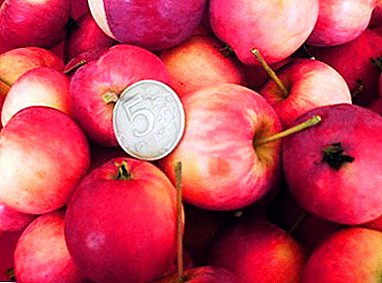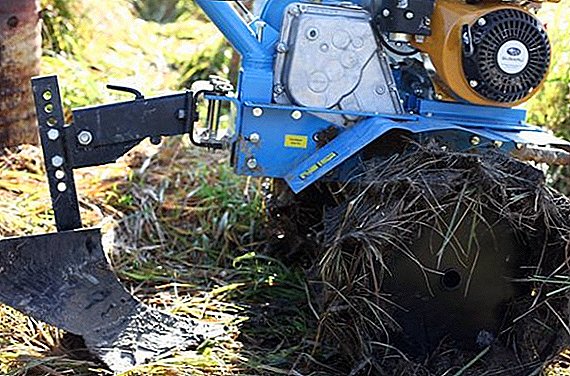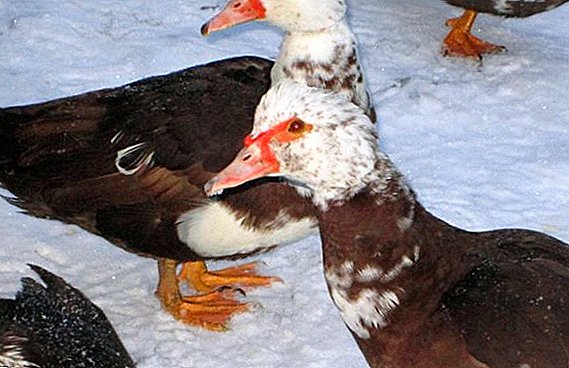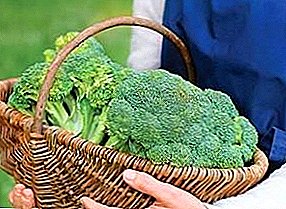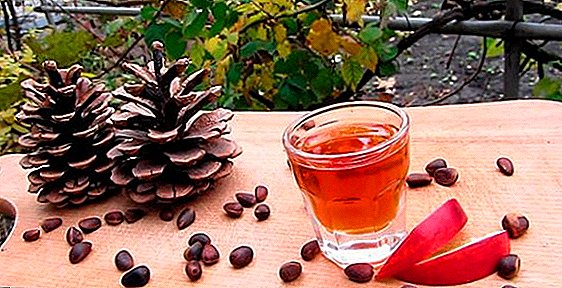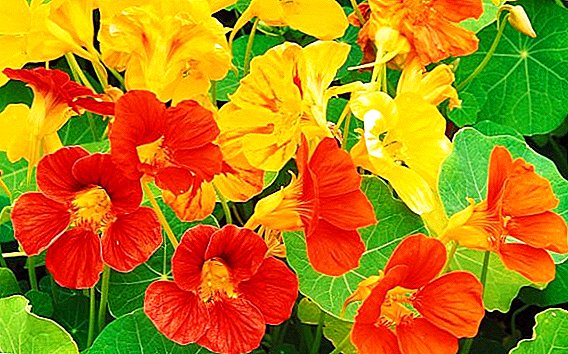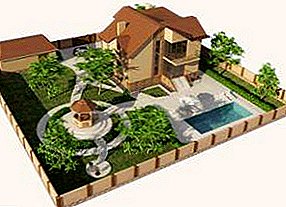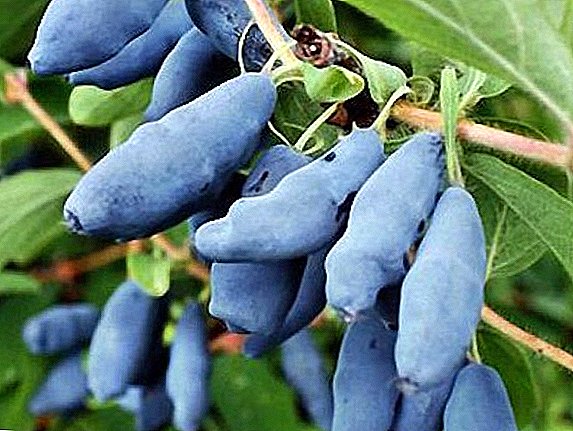 Honeysuckle is a valuable fruit and berry culture. Presented in the form of branched shrubs, which can grow up to two meters. Fruits - elongated elliptical shape, covered with a bluish bloom. Both decorative honeysuckle and fruit-bearing varieties are subject to all sorts of diseases and pests.
Honeysuckle is a valuable fruit and berry culture. Presented in the form of branched shrubs, which can grow up to two meters. Fruits - elongated elliptical shape, covered with a bluish bloom. Both decorative honeysuckle and fruit-bearing varieties are subject to all sorts of diseases and pests.
Did you know? One of the most famous inedible honeysuckle species is the wolfberry.As a preventive measure, honeysuckle treatment is carried out in the spring, which helps get rid of diseases and pests. Various insecticides are used for this.
Methods of dealing with gonorrhea mites
Honeysuckle mite is one of the popular pests of this culture. Its size is about 0.5 mm. Ticks develop rapidly in high humidity and shaded areas.  They feed on the sap of shoots, leaves, and fruits. The parasitic mite on the underside of the leaves, as a result of which the edges of the leaves become corrugated and become covered with yellow spots, and at the end of summer turn brown and curl. A black fungus appears on the front of the leaves and they fall off prematurely.
They feed on the sap of shoots, leaves, and fruits. The parasitic mite on the underside of the leaves, as a result of which the edges of the leaves become corrugated and become covered with yellow spots, and at the end of summer turn brown and curl. A black fungus appears on the front of the leaves and they fall off prematurely.
To get rid of the tick, honeysuckle planting must be thinned out on time and treated with acaricides. For prophylaxis, in July, you can use "Konfidor", "Rotor" or "Aktellik".
In order not to expose your garden to danger, it will be useful for you to learn about the diseases and pests of plum, peony, geranium, felt cherries, cypress, cannes.
Honeysuckle aphid
Honeysuckle aphid is the most frequent guest on the bush. In one season more than two generations of this pest may appear on the honeysuckle.
If the leaves on the young shoots turn yellow, fold and fold in half, and the shoots stop growing, this may indicate the appearance of aphids on the honeysuckle.  In early spring, to destroy the overwintering eggs of aphids, you need to spray the bush "Konfidorom", "Rotor" or "Aktellikom", or use the drug "Eleksar".
In early spring, to destroy the overwintering eggs of aphids, you need to spray the bush "Konfidorom", "Rotor" or "Aktellikom", or use the drug "Eleksar".
To combat aphids on honeysuckle, you can also use folk remedies: for example, tinctures made from garlic, tobacco and pepper.
Harm from the honeysuckle
Honeysuckle Finger - A small gray butterfly, the caterpillar of which is a dangerous pest of the plant. It takes root deep into the fruit and feeds on seeds and berry pulp.  Unripe fruits darken, frown, and fall off. The yield of the plant is greatly reduced. To combat the caterpillar, the honeysquitoe is used chlorophos. To destroy the larvae used infusions of tops of potato and tomato, as well as the drug "Inta-Vir."
Unripe fruits darken, frown, and fall off. The yield of the plant is greatly reduced. To combat the caterpillar, the honeysquitoe is used chlorophos. To destroy the larvae used infusions of tops of potato and tomato, as well as the drug "Inta-Vir."
Important! Spray bush chemicals can only after harvest.
Rosana moth
Rosana moth - a small brown butterfly that lays eggs in the bark of honeysuckle for wintering. The green caterpillars of these butterflies live in twisted leaves and feed on the vegetative organs of the culture: shoots, fruits, leaves and buds. Damaged parts of the bush are connected in one, covered with cobwebs.  To combat the rosian moth, they use Actellic, Eleasar. You can also use a folk remedy - pine infusion.
To combat the rosian moth, they use Actellic, Eleasar. You can also use a folk remedy - pine infusion.
It can be prepared at home, or you can buy coniferous extract at a pharmacy, dilute it with water and spray the shrub once a week until the pests disappear completely.
How to deal with gooseberry moth
Gooseberry moth - bright big butterfly, which in summer lays eggs on honeysuckle. After some time, the caterpillars develop from them and feed on the foliage of the shrub, eating it to the very vein.  To prevent the appearance of the moth, fallen leaves under a bush need to be cleaned, the soil loosened and dug up in the fall. For prophylaxis use "Karbofos", "Aktellik".
To prevent the appearance of the moth, fallen leaves under a bush need to be cleaned, the soil loosened and dug up in the fall. For prophylaxis use "Karbofos", "Aktellik".
Honeysuckle should be treated twice: when buds are blooming, until they have separated themselves after flowering.
Important! If the peppered moth appeared on the honeysuckle at the end of the season, it is necessary to spray the bush with insecticides for the third time.To combat the gooseberry moth, you can use the popular method - pour boiling water over the area around the bush. The larvae need to be shaken off manually, then destroying them.
Willow and acacia scale on honeysuckle
Some of the dangerous pests of honeysuckle are willow and acacia scale. They appear from the larvae in early spring. These small pests, covered with a shield, attach to the bark of the honeysuckle and feed on the sap of its branches and young shoots.  The shrub becomes weak and ceases to bear fruit. After some time the honeysuckle bush dies. For the prevention of willow and acacia flaps, honeysuckle is treated twice in the summer (with an interval of 15 days), using the Rogor or Actellic for this.
The shrub becomes weak and ceases to bear fruit. After some time the honeysuckle bush dies. For the prevention of willow and acacia flaps, honeysuckle is treated twice in the summer (with an interval of 15 days), using the Rogor or Actellic for this.
From these pests of honeysuckle and to combat them you can use folk remedy: shrub need to pour kerosene. This is done in the cold season, and the air temperature should not be below 0 degrees.
Did you know? In some species of honeysuckle bark peels off, which is often confused with bark diseases.
Apple tree worm
 Appearance of comma-like shield It resembles an inverted comma, in color to match the shrub bark.
Appearance of comma-like shield It resembles an inverted comma, in color to match the shrub bark.
Female in august lays eggs and dies. Fertilized eggs hibernate under its shield and in early June, oval-shaped, yellow-colored larvae appear from them.
They are located on young branches and suck the juice out of them. After a few months, they become stationary, covered with a flap. The bark of honeysuckle dies, leaves fall. Bush loses frost resistance.
To get rid of the comma-like flap on the honeysuckle, you need to know how to deal with it and what preventive measures to apply:
- Before planting shrubs seedlings need to be well inspected;
- when a pest is found, the affected branches are immediately cut off;
- if there are few flakes, they can be washed off with water with the addition of garlic and tobacco;
- autumn honeysuckle need to be processed using a solution of copper sulphate;
- to destroy the eggs, you need to know what to process the honeysuckle in the spring (for example, often use a solution of DNOC or "Nitrafen");
- after flowering, in the period of hatching and movement of the larvae, the shrub should be sprayed with a solution of "Karbofos", "Kinmiksa" or other insecticides.
Did you know? Honeysuckle is a long-lived bush. With good care, it can bear fruit from 20 to 130 years.
Caustic wood: control measures
Corrosive wood - Gray moth, which is one of the main plant pests. She lays eggs in the middle of summer at the base of the honeysuckle branches.  A caterpillar emerges from the eggs, which is embedded in the shoots and makes passages in them, throwing out the excrement-sawdust. The branches, in which she visited, dry up, and the caterpillar itself remains to winter in the deep layers of wood.
A caterpillar emerges from the eggs, which is embedded in the shoots and makes passages in them, throwing out the excrement-sawdust. The branches, in which she visited, dry up, and the caterpillar itself remains to winter in the deep layers of wood.
To combat coronary woods use gasoline. It is necessary to roll balls of cotton wool the size of a pea, put them in a container with gasoline and well soak. Petrol balls are introduced into the caterpillar turns using wire.
If you want to have good fruits from your garden, you will need such drugs from pests as: Calypso, Bitoxibacillin, Aktara, Bi-58, Fitoverm.After a few days, the balls reach out and repeat the procedure again. You can also use Fufanon or Karbofos in the summer after picking berries, and in August when butterflies lay eggs.
Honeysuckle mole-baby
Moth-baby is a small butterfly that lays eggs on the leaves of honeysuckle. From eggs appear amber-yellow with brown-red-headed caterpillars. They cause serious harm in September, feeding inside the leaf and leaving on its top double-sided mines with a narrow line of excrement.  To fight with moth-baby you need to spray honeysuckle "Aktellik", "Fitoverm" or "Karbofos". You need to process at the end of summer - early autumn, when butterflies lay eggs.
To fight with moth-baby you need to spray honeysuckle "Aktellik", "Fitoverm" or "Karbofos". You need to process at the end of summer - early autumn, when butterflies lay eggs.
General preventive measures to prevent the occurrence of pests on honeysuckle include constant thinning of the planting, cleaning of dry leaves under the bush and regular inspection of the shrub.


